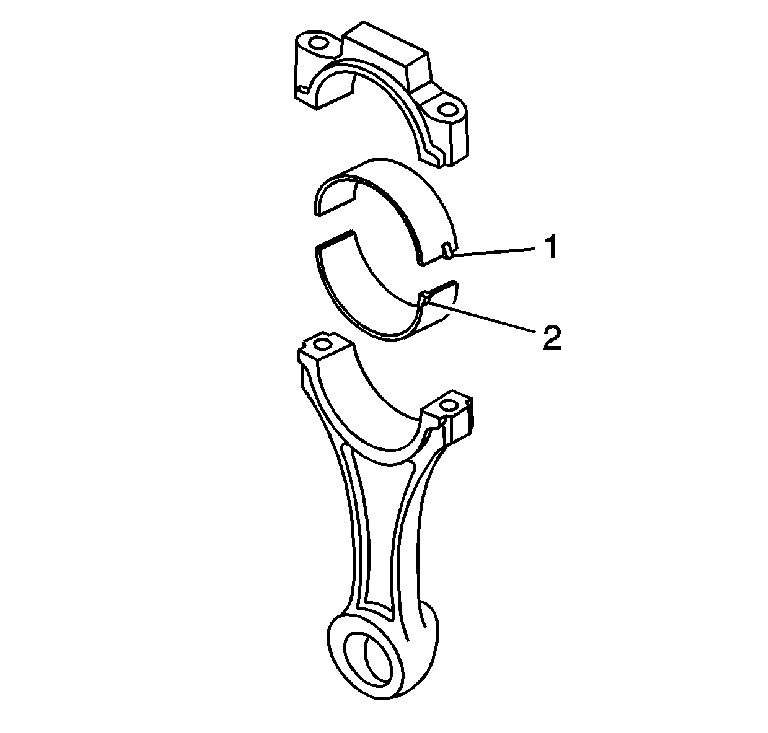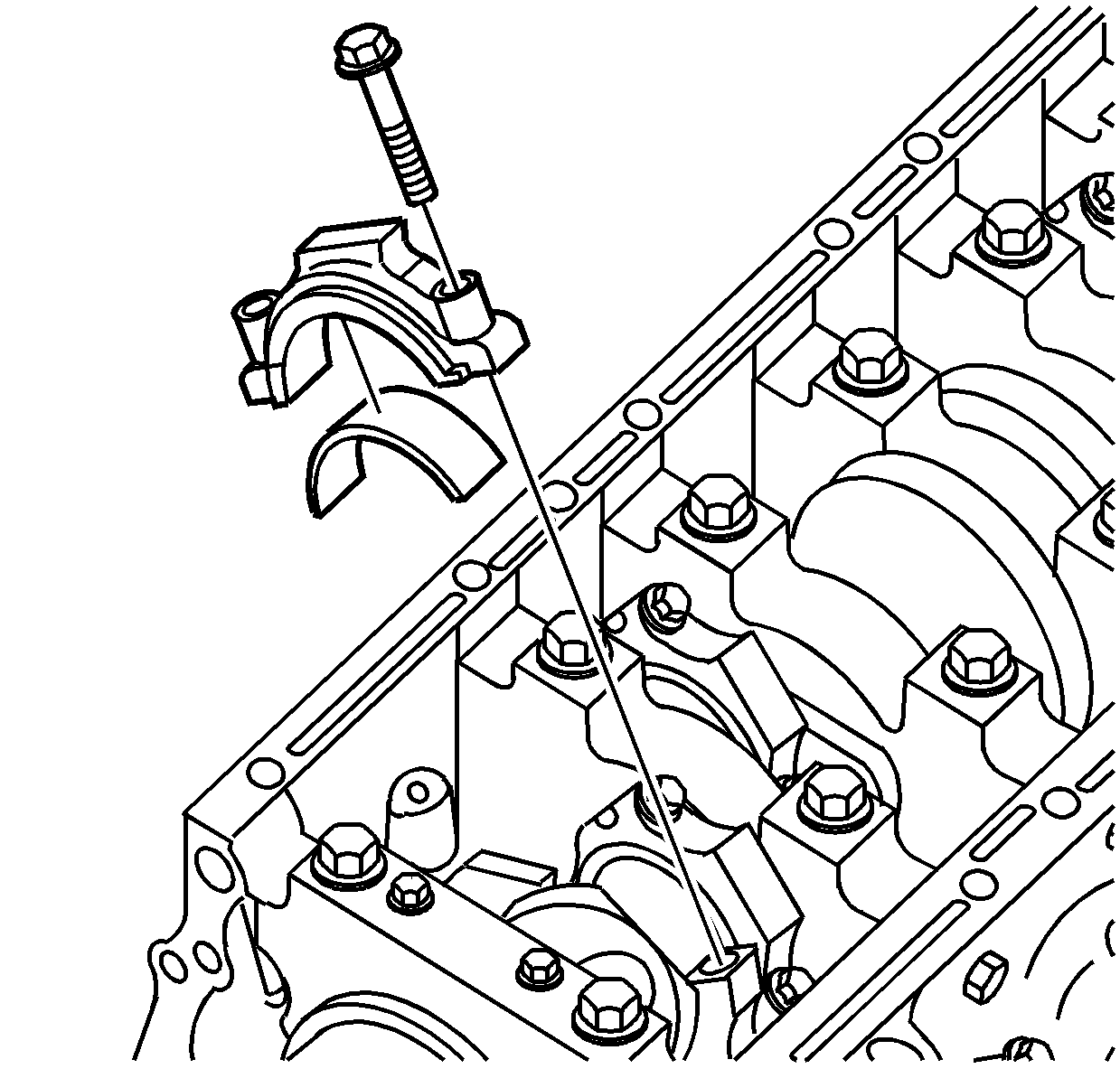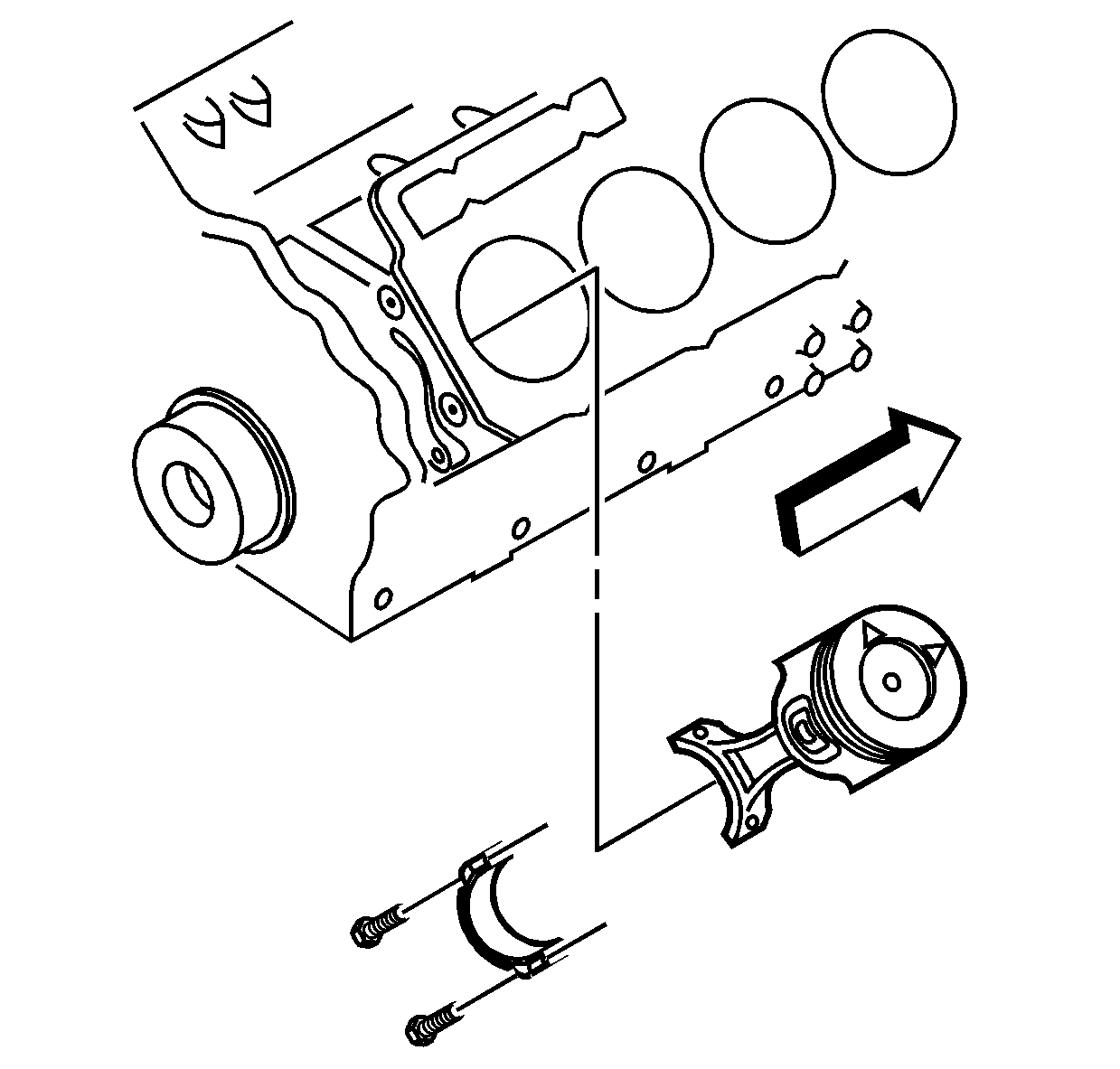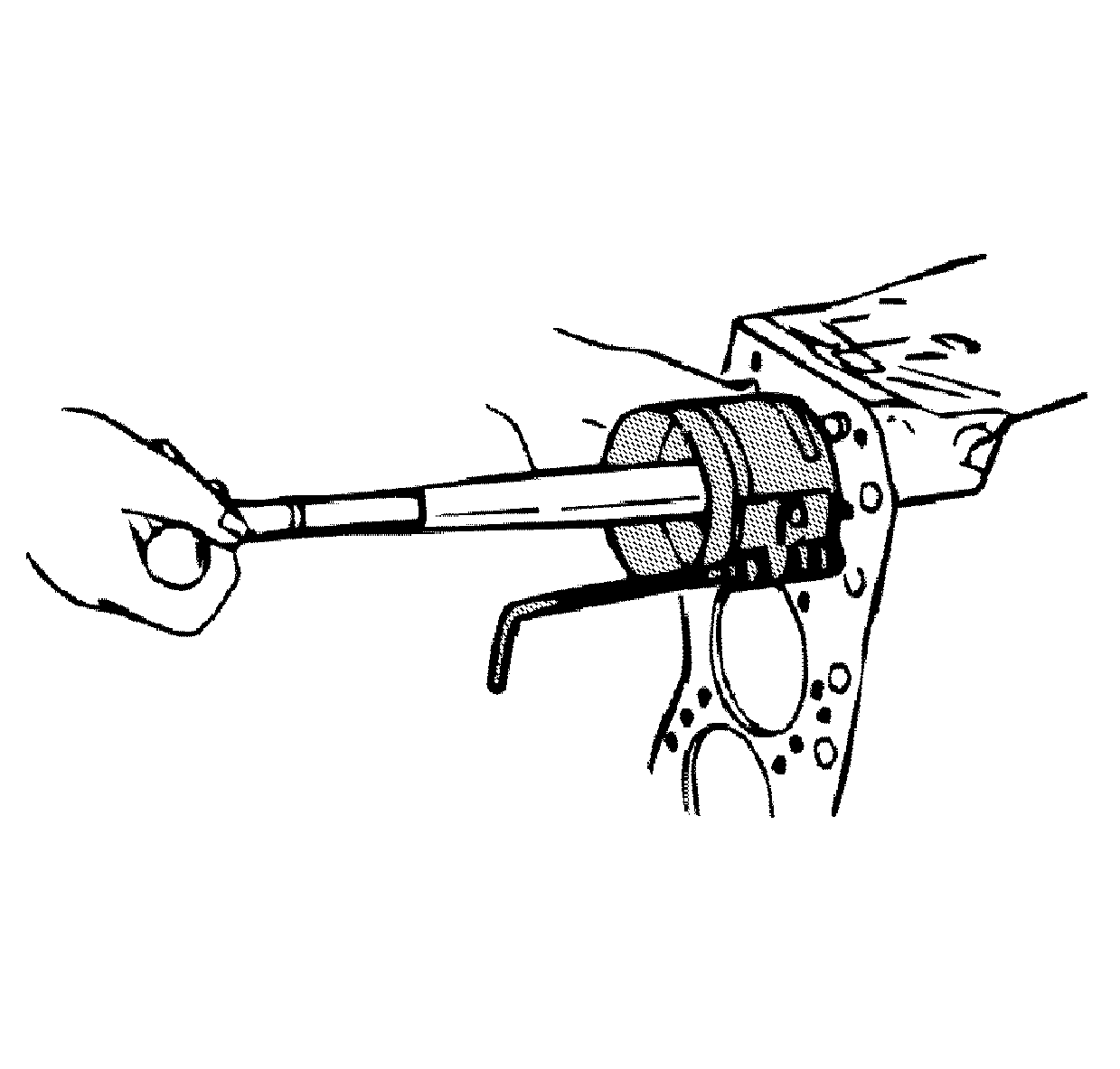Tools Required
| • | J 8037 Piston Ring Compressor |
| • | J 36660-A Torque/Angle Meter |
- Select the connecting rod bearing according to the Connecting Rod Bearings Selection Specifications chart.
- Position the crankshaft so the connecting rod journal is opposite the piston and connecting rod assembly being installed.
- Install the connecting rod bearing inserts.
- Lubricate the cylinder wall and piston rings with engine oil.
- Install the J 8037 to the piston to compress the piston rings.
- Orientate the piston front mark and the piston inside mark to the engine block.
- Push the piston and connecting rod assembly into the engine.
- Install the gauging plastic onto the connecting rod journal. Install the gauging plastic the full width of the journal.
- Install the connecting rod cap with its stamped cylinder number aligned with the stamped cylinder number on the connecting rod.
- Install the original connecting rod cap bolts for the plastic gauging. NEW bolts will be used for final assembly.
- Tighten the bolts in three steps.
- Remove the connecting rod cap bolts.
- Compare the width of the gauging plastic with the scale printed on the gauging plastic container. The connecting rod bearing clearance should be 0.10 mm (0.0039 in).
- Discard the original connecting rod bolts once the plastic gauging is completed. NEW connecting rod bolts will be used for final assembly.
- Carefully clean the gauging plastic from the bearing surface and the crankpin.
- Lubricate the connecting rod bearing inserts with engine oil.
- Install the connecting rod caps with the stamped cylinder number aligned with the stamped cylinder number on the connecting rods.
- Install NEW connecting rod cap bolts.
- Tighten the connecting rod cap bolts in three steps.

Important: The connecting rod bearing with the notch all the way out against the edge of the bearing (2) is the connecting rod bearing. The connecting rod bearing with the notch "in board" (1) is the connecting rod cap bearing.



Notice: The chamfered side of the connecting rod large journal ends must face away from each other on a common crankshaft journal. Placement of the chamfered side of the connecting rod large journal ends in any other direction or combination will cause damage to the crankshaft, connecting rod and connecting rod bearing.

Notice: Use the correct fastener in the correct location. Replacement fasteners must be the correct part number for that application. Fasteners requiring replacement or fasteners requiring the use of thread locking compound or sealant are identified in the service procedure. Do not use paints, lubricants, or corrosion inhibitors on fasteners or fastener joint surfaces unless specified. These coatings affect fastener torque and joint clamping force and may damage the fastener. Use the correct tightening sequence and specifications when installing fasteners in order to avoid damage to parts and systems.
Tighten
Notice: This component uses bolts with a preapplied molybdenum disulfide coating for thread lubrication. Do not remove the coating or use any additional lubricant. Improperly lubricated threads will adversely affect the bolt torque and clamp load. Improper bolt torque and clamp load can lead to engine damage.
Tighten
